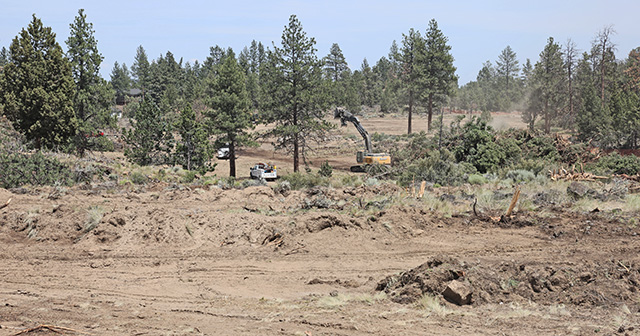Hydropower project proposed
Published 5:00 am Wednesday, July 31, 2013
An Idaho company has received approval to study the potential for a 150-megawatt hydropower project near Bowman Dam and Prineville Reservoir in Crook County.
The Federal Energy Regulatory Commission granted a preliminary permit July 19 to Prineville Energy Storage LLC, an affiliate of Boise-based Gridflex Energy, to gauge the feasibility of building a 40-foot dam and reservoir immediately west of Prineville Reservoir.
The new, upper reservoir would have a surface area of 57 acres and storage capacity of 2,260 acre-feet of water, a fraction of the size of Prineville Reservoir, which covers 3,030 acres and holds more than 150,000 acre-feet of water. Bowman Dam is 240 feet tall.
But developers envision the Prineville Pumped Storage Project as a way of storing energy, in the form of water, that could be released from the upper reservoir to run through turbines and generate supplemental electricity when demand is high.
Pumped hydro storage has been around for 100 years, said Matthew Shapiro, CEO of Gridflex Energy.
“It’s the oldest form of large-scale energy storage,” he said.
Federal energy experts see the need for energy storage, according to reports, especially as the nation generates more electricity from sources like wind and solar, which produce electricity only when the wind blows and the sun shines.
But in the current market and with existing regulatory hurdles, building new hydropower plants for pumped storage may not be cost effective, according to an April study conducted for the U.S. Energy Department. However, the market is likely to change, the report stated, which could provide more incentive to build.
Several bills pending in Congress related to hydropower would speed up some licensing provisions, provide tax credits and make other changes.
“Every pumped storage project … is unique,” Shapiro said, “and each one has its own cost profile.”
In its application to FERC, Prineville Energy Storage states the project would provide power capacity to the Bend-Prineville region, which “lacks any significant generation resources” and has seen new demand for electricity from data centers.
Bowman Dam and Prineville Reservoir, built by the Bureau of Reclamation, supply water for irrigation, not electricity generation.
The upper reservoir for the Prineville Pumped Storage Project would get its initial fill of water from the Prineville Reservoir. After that, the water would, in a sense, be recycled. It would flow down into Prineville Reservoir when generating electricity and then get pumped back into the upper reservoir.
A powerhouse would be built below ground and house three 50-megawatt turbines, capable of generating an amount of electricity to power roughly 30,000 homes annually.
Along with the dam, reservoir and power-generating equipment, the proposal calls for building a 15- to 16-mile transmission line to connect to a substation.
FERC’s preliminary permit gives Prineville Energy Storage three years to study the feasibility of the proposal. The company estimates the study will cost between $1 million and $1.5 million, according to its application.
No agency opposed Prineville Energy Storage’s request for a preliminary permit. However, the Bureau of Reclamation and the Ochoco and North Unit irrigation districts raised several issues about the pumped storage project, but the Federal Energy Regulatory Commission said the concerns were premature.
“The purpose of a preliminary permit is to study the feasibility of the project, including studying potential impacts,” according to the FERC order. “Should the permittee file a license application, these issues will be addressed in the licensing process.”
A preliminary permit, however, preserves Prineville Energy Storage’s priority to apply for a license, according to FERC.
Gridflex Energy has about 15 pumped hydro storage projects under development in nine states, according to its website.
The increasing use of wind and solar energy, along with the need for new electricity-generating capacity, drives the company’s business model, Shapiro said.
Last year, the U.S. Energy Information Administration predicted 175 coal-fired power generators would be retired by 2016 nationwide. Natural-gas-fired power plants have a lifespan of about 40 years, according to estimates.
Pumped hydro storage, however, can generate power for 75-100 years, Shapiro said.
“Obviously, that’s a better deal for the rate payers in the long run,” he said.







